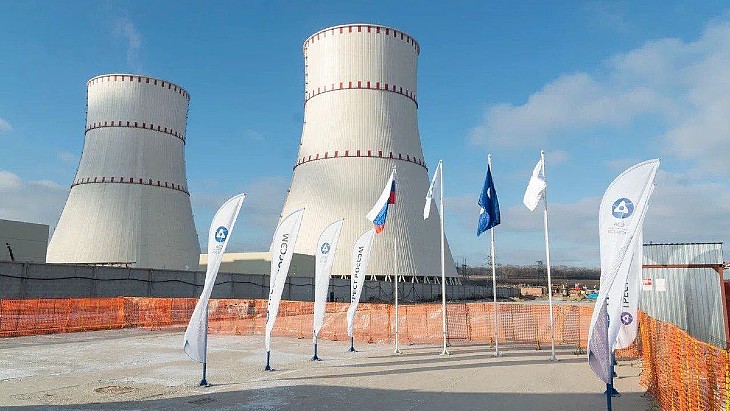"President Biden is absolutely committed to getting this country powered by clean energy, using every single clean energy tool available," Granholm said.
This is the only way, she said, that the USA will meet its targets of a 52% reduction in CO2 emissions by the end of 2030, 100% clean energy by 2035 and a net-zero economy by 2050.
"Those are big goals, so let me say it loud and clear: Carbon-free nuclear power is an absolutely critical part of our decarbonisation equation," she said.
The Biden Administration is acting on this through its 2022 budget proposal and in its American Jobs Plan, she said. The budget request calls for a USD1.8 billion of funding for the country's nuclear energy programme.
The first priority though, she said, is to preserve the existing nuclear fleet, which generates 20% of US electricity and represents more than half of its carbon-free power.
"DOE already works across the nuclear sector, which includes some of you. We work with you and we work with you on projects to reduce the operating costs and increase revenues from the nuclear fleet, and with this budget we've put USD175 million into these modernisation efforts. A lot of it is going into developing and deploying new and improved fuels to enhance performance and to reduce costs. And we're going to keep doing everything that we can to encourage our partners in the states to keep their reactors online," she said.
At the same time, the DOE is making it a priority to fund and find a long-term disposal solution to nuclear waste.
"We know it's not going to be Yucca Mountain," Granholm said. "Instead, we want to move forward with finding a consent-based siting strategy. That's why our funding request includes USD20 million to support planning for the near-term consolidation and storage of nuclear waste."
It is also looking ahead to the next generation of nuclear energy technologies. There is "a lot to like", she said, and then referred to the recent announcement by TerraPower that it will build its Natrium demonstration reactor at the site of a former coal plant in Wyoming.
"Way cool," Granholm said. "This plant is going to be cheaper to build and operate than the current way we build and operate our reactors. It's going to be lower emissions; it's going to generate good paying energy jobs for a community that has helped to power our country for decades."
The "huge potential" of advanced reactors is why the DOE's budget request includes nearly USD700 million "to drive a wide range" of these kinds of technologies forward. USD245 million of that request is going to support the demonstration of two advanced reactors within the next seven years; another USD305 million would develop and demonstrate additional advanced designs by the mid-2030s; and USD145 million would build the Versatile Test Reactor, which would be the first fast test reactor that the USA will have brought online in over 20 years.
"If all of that excites you, just imagine what tens of billions of dollars more for research and development and demonstration and deployment would do for nuclear energy in America," Granholm said.
"Imagine what it would mean to revamp the physical and digital infrastructure at our national labs; to invest in a more diverse STEM workforce: to extend more federal R&D funding to historically black colleges and universities, and other minority-serving institutions. All of that is what the American Jobs Plan would provide, and alongside those investments the plan calls for an Energy Efficiency and Clean Energy Standard and an Allocated Production Credit for electricity generation from the eligible existing nuclear power facilities.
"I'm telling you: Those would solve the nuclear plant retirement issue in one fell swoop. It's big. So the point is, this Administration sees these next few years as a truly 'can't miss' opportunity in nuclear energy."
Noting the interest in nuclear energy of others countries to meet their net-zero emissions goals, Granholm said the budget proposal and the American Jobs Plan both aim to ensure that the next generation of nuclear technologies that are needed all over the world "are dreamt up here, are developed here, are built here and then maybe deployed everywhere", she said.
"We can launch more nuclear projects across the country, we can power more communities with clean energy, we can create millions more jobs and we can make enormous progress on our very bold climate goals. But this is really a matter of will. All of you can help push the budget and the American Jobs Plan over the finish line. All of you, including of course the students in attendance.
"All of you can help drive nuclear energy innovation forward. Whether you want to learn more about how you can contribute to this work, or if you have questions or if you have suggestions, let's talk, because the only way we're going to seize this massive opportunity to finally get our arms around the climate crises, the only way it's going to happen, is if we work together."





_30199.jpg)
_72306.jpg)

_49562.jpg)





